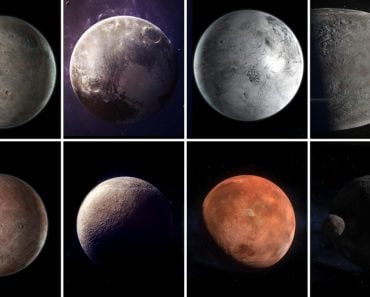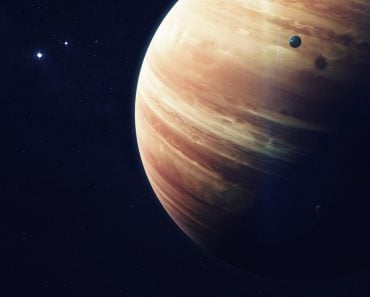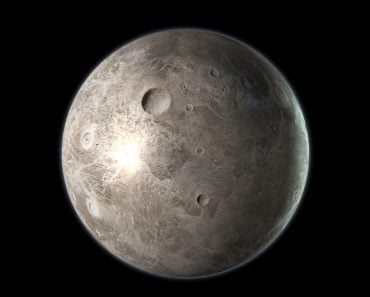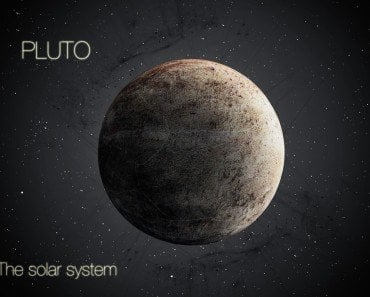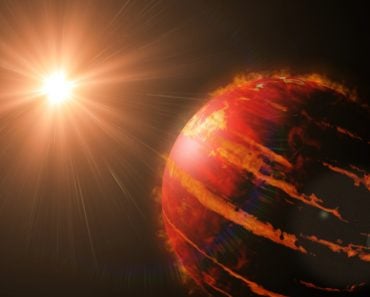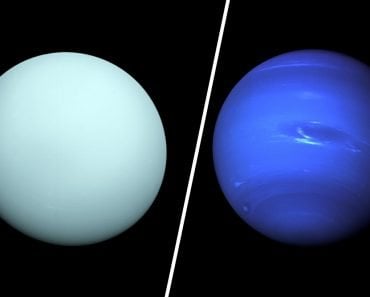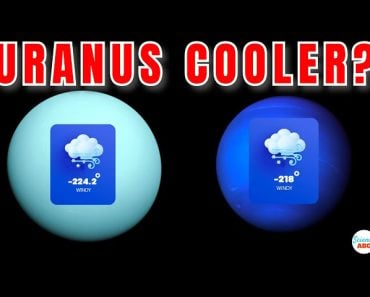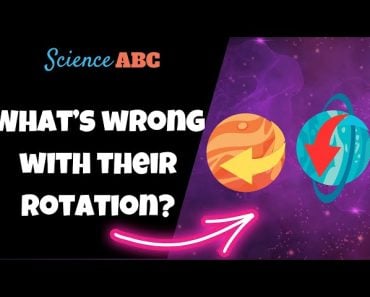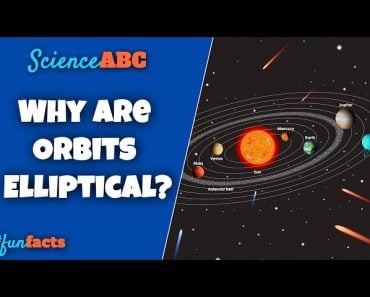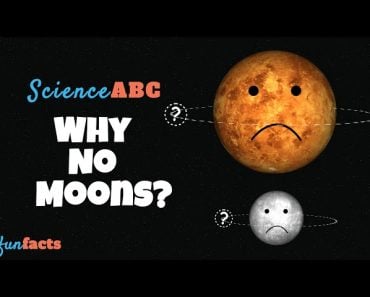Table of Contents (click to expand)
Haumea is a dwarf planet located beyond Neptune in the Kuiper Belt. Its rotation is the fastest in the solar system; it completes a full rotation in just 4 hours! It also has a ring that orbits around it and is an elongated ellipsoid.
Our solar system is a vast place. The Sun sits at the center of the solar system and all the heavenly bodies orbit it. The distance from the Sun to Earth is considered 1 astronomical unit (which is 150,000,000 km or 93,000,000 mi).
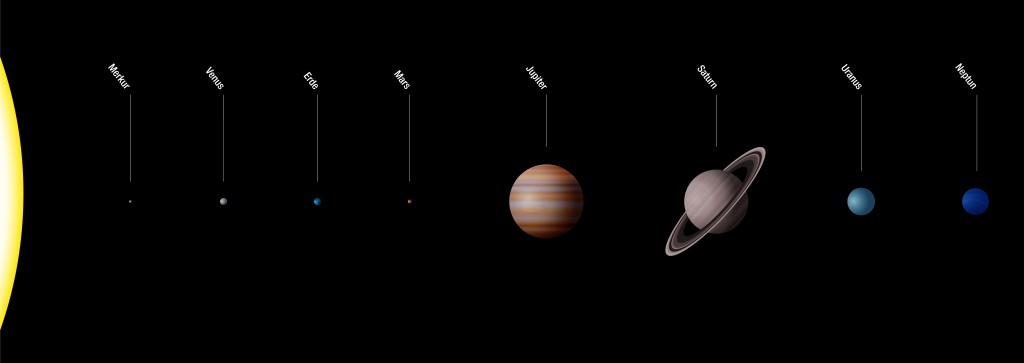
We have 8 planets (Sorry Pluto!) in our solar system, but there are far more heavenly bodies between these planets within the orbit of the Sun. One of these is a dwarf planet called Haumea, which is located beyond Neptune’s orbit, approximately 43 AU (6,452,000,000 km; 4,010,000,000 mi) from the Sun.
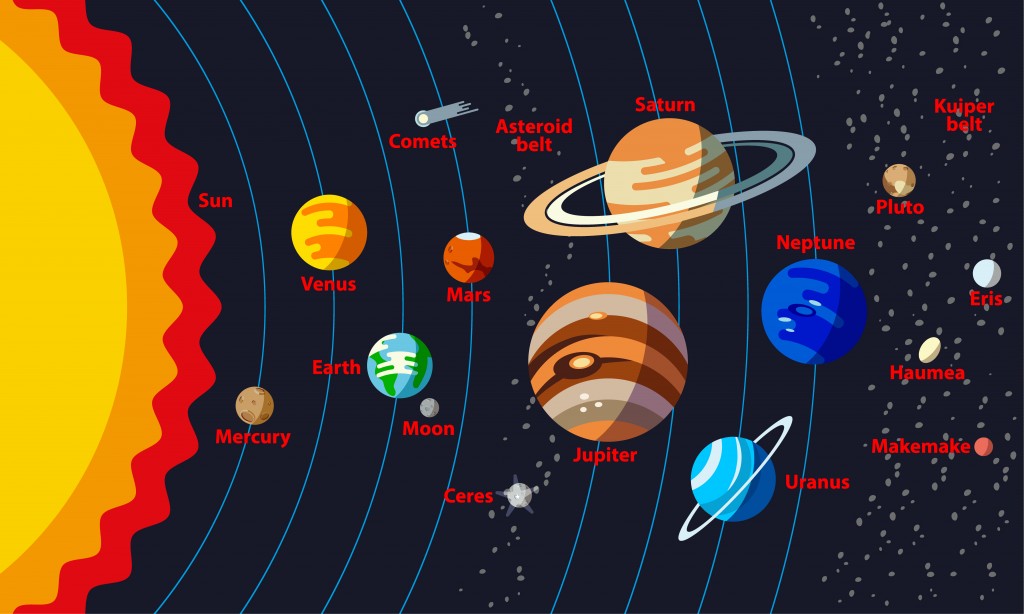
Now, let’s dive into the details of this dwarf planet.
Recommended Video for you:
Discovery And Classification
The discovery of Haumea came about in two ways. Although it is primarily credited to José Luis Ortiz Moreno and his team at Spain’s Sierra Nevada Observatory, as they discovered it on March 7, 2003, it was also independently discovered by Mike Brown and his Caltech team on December 28, 2004 at the Mauna Kea Observatory. Ortiz and his team were first to submit their report to the MPC (Minor Planet Center). IAU (International Astronomical Union) guidelines state that the first to submit a report with the appropriate positional data that determines its orbit gets the credit and the right to choose its name, making them the official discoverer.
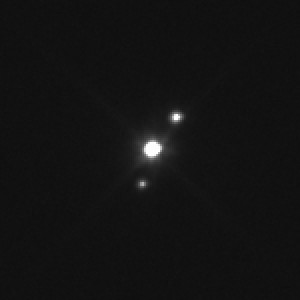
Haumea is located beyond Neptune’s orbit and is a Kuiper Belt object. According to the guidelines of IAU, every classical Kuiper Belt object (in the circumstellar disc of asteroids and other celestial bodies beyond Neptune) should be named based on the mythological beings frequently associated with creation.
Ortiz and his team proposed the name for the newly discovered dwarf planet ‘Ataecina’ after the Iberian goddess of spring, but it did not fit IAU’s criteria. ‘Haumea’ was proposed by the Caltech team after the matron goddess of the Hawaiian island where their discovery was made. Haumea is a goddess of childbirth and fertility, with many children having been born from different parts of her body. IAU chose this name and credits the Caltech team for the same. Haumea’s two known moons are named after the goddess’ daughters—Hi’iaka and Namaka.
Haumea is a dwarf planet, a plutoid located beyond Neptune. Haumea is thought to have been large enough to have been rounded by its own gravity into an orbiting shape in hydrostatic equilibrium. It also isn’t big enough to dominate its neighborhood, a criterion that requires a celestial body to become the dominant gravitational body in its orbit; that’s why Haumea is only classified as a dwarf planet. Haumea is in a weak orbital resonance with Neptune (meaning that its gravity affects Haumea), making it a resonant trans-Neptune object.
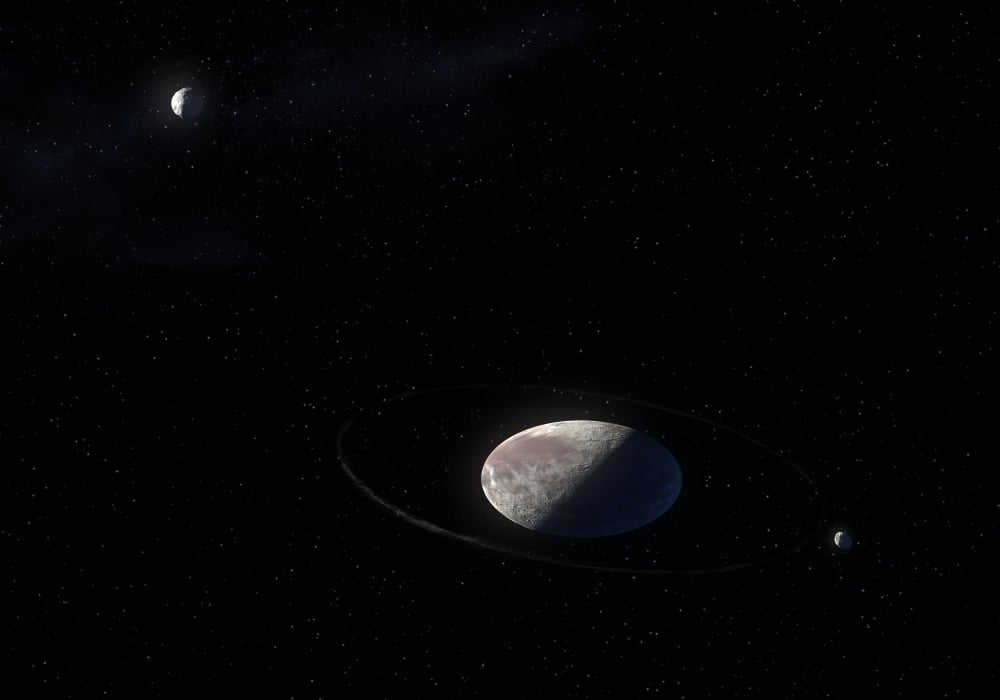
Haumea is also part of the trans-Neptune collision family (known as the Haumean family), which consists of objects with very similar orbital patterns and spectra (spectroscopy shows nearly pure white ice), suggesting that they came from a disruptive impact between two celestial bodies. The objects in this family are Haumea, its two moons, and a handful of other Kuiper Belt objects.
Orbit And Rotation
Haumea takes 285 Earth years to make one orbit around the Sun, and has an orbital inclination of 28°. The distance of Haumea from the Sun is 43AU. Given that Haumea is in orbital resonance with Neptune, its orbit is slightly more eccentric than its fellow members of the collisional family.
The brightest objects in the Kuiper Belt are Pluto and Makemake (both dwarf planets). Haumea is the third brightest object in this belt, with a visual magnitude of 17.3, making it possible to see it through even a large amateur telescope.
Haumea is believed to complete a rotation every 4 hours, which makes its shape elongated. This is the fastest rotation of any known object in our solar system and faster than any known celestial body larger than 100 km in diameter. Its mean orbit velocity is 16,191km/h and the average orbit distance is 6,432,011,461km.
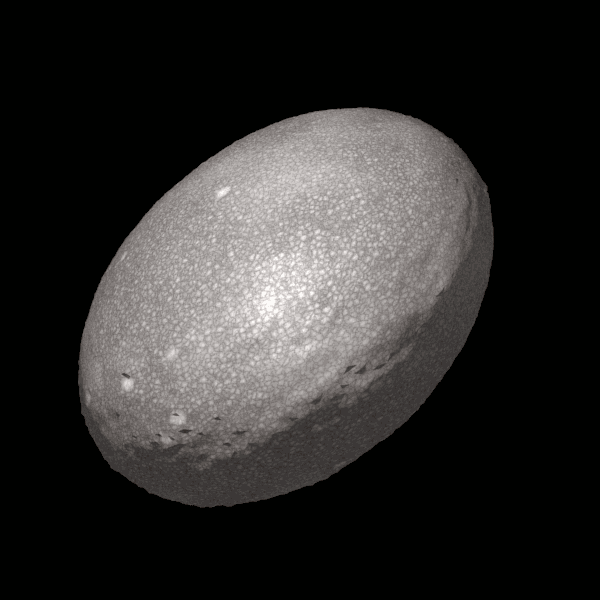
Physical Characteristics
Haumea rotates very rapidly, completing one rotation every 4 hours, which makes it an elongated ellipsoid in shape. The estimated density of Haumea is between 2.6–3.3 g/cm3, making it a high-density dwarf planet. This high density indicates the existence of silicate minerals, such as olivine and pyroxene, which are known to make up most of the solar system’s rocky objects. This also indicates that most of Haumea consists of rock covered with a coating of ice.
To get an estimate of Haumea’s shape and dimensions, several models have been made. Haumea, most likely, is a triaxial ellipsoid with dimensions of 2,000 × 1,500 × 1,000 km and a diameter of about 1,150 km. Haumea’s surface shines very brightly, as the surface is crystalline ice!
On January 21, 2017, during a stellar occultation, it was observed that Haumea has a ring around it. This ring is 70 km wide and has a radius of 2287 km. The ring appears to be coplanar with Haumea’s equator and with the orbit of one of Haumea’s moon—Hi’iaka. The ratio of Haumea’s rotation with the ring’s revolution is 3:1, meaning that in the time it takes for the ring to complete one revolution around the dwarf planet, Haumea completes 3 full rotations!
Computer-generated model of Haumea and its ring (Photo Credit : Tomruen/Wikimedia Commons)
Of Haumea’s two satellites, Hi’iaka is the larger and brighter one; it is roughly 310 km in diameter and orbits Haumea circularly every 49 days. Namaka, the other satellite, is 1/10th the mass of Haumea and orbits it in a highly elliptical manner, completing one orbit every 18 days.
Closing Thoughts
Haumea is certainly a peculiar celestial object in the Kuiper Belt. Its highly unusual rotation and rings make it an exciting stellar body to study. The surface is a coat of ice, making it very cold and the potential for life being there is completely ruled out. As the discovery of Haumea was fairly recent, we don’t know too much about the dwarf planet. Better imaging techniques and more detailed data from the planet will surely shed light on the physical properties and its atmosphere, as well as help to determine a more accurate size and identify the core elements present on the planet and its satellites.
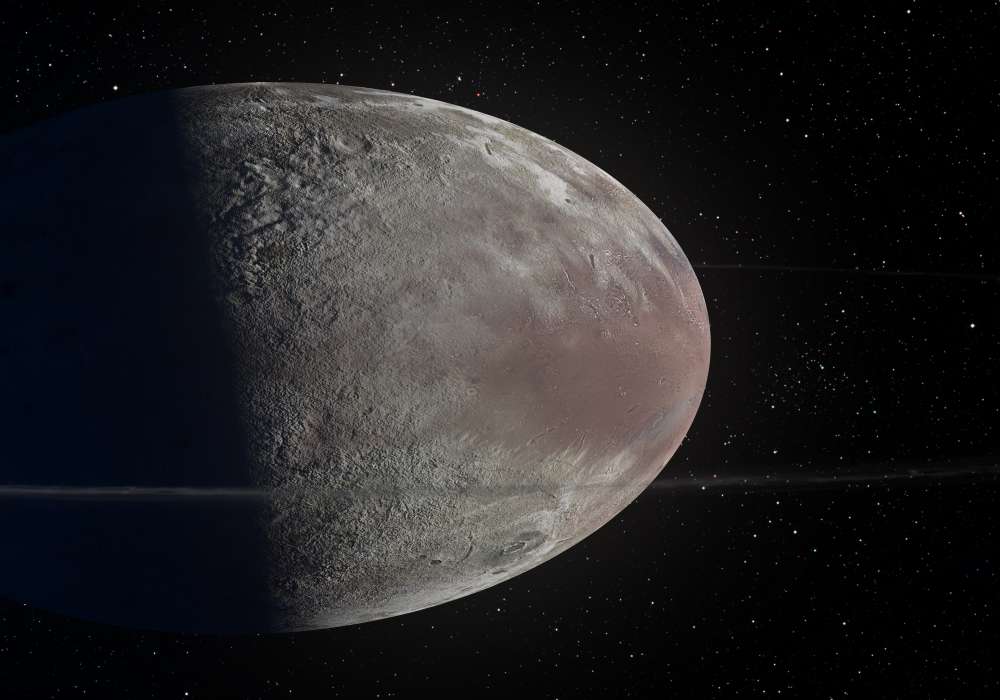
References (click to expand)
- Haumea.
- Haumea.
- Ortiz, J. L., Santos-Sanz, P., Sicardy, B., Benedetti-Rossi, G., Bérard, D., Morales, N., … Iglesias-Marzoa, R. (2017, October). The size, shape, density and ring of the dwarf planet Haumea from a stellar occultation. Nature. Springer Science and Business Media LLC.
- Haumea Hula-Hoops are in the Kuiper Belt | Planetary News.
- Lockwood, A. C., Brown, M. E., & Stansberry, J. (2014, March 2). The Size and Shape of the Oblong Dwarf Planet Haumea. Earth, Moon, and Planets. Springer Science and Business Media LLC.

